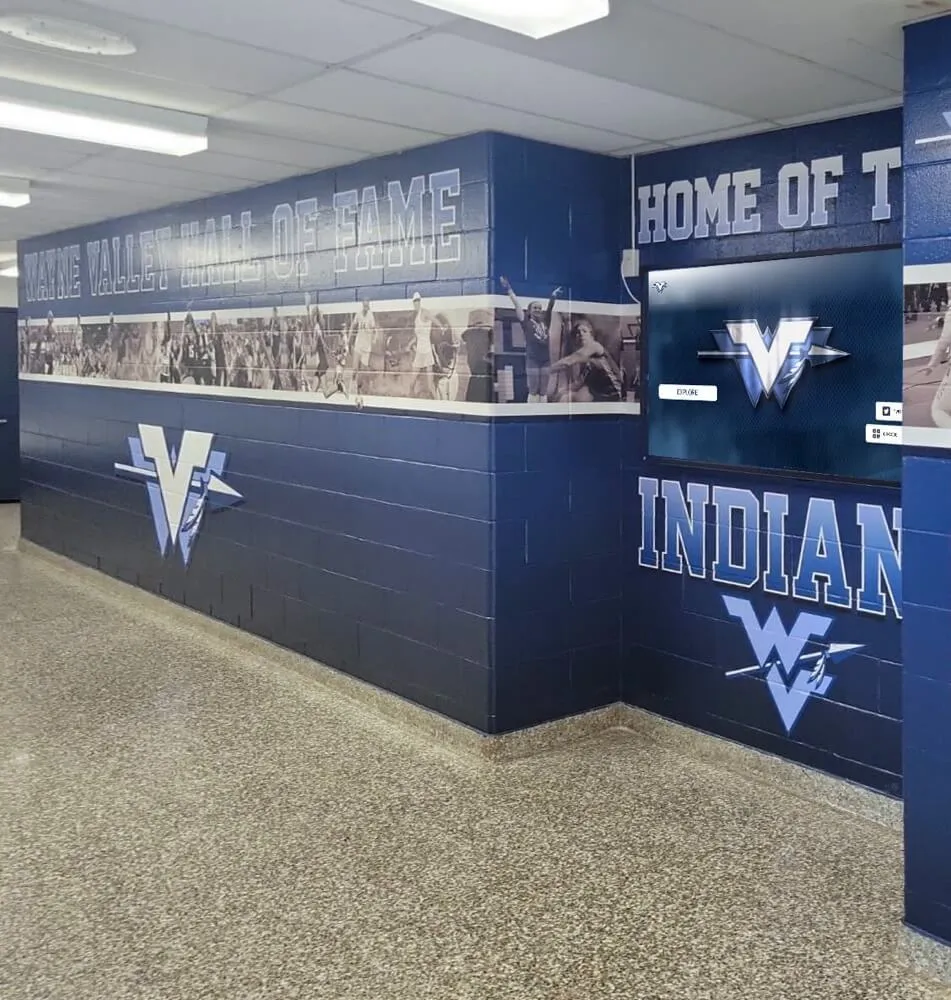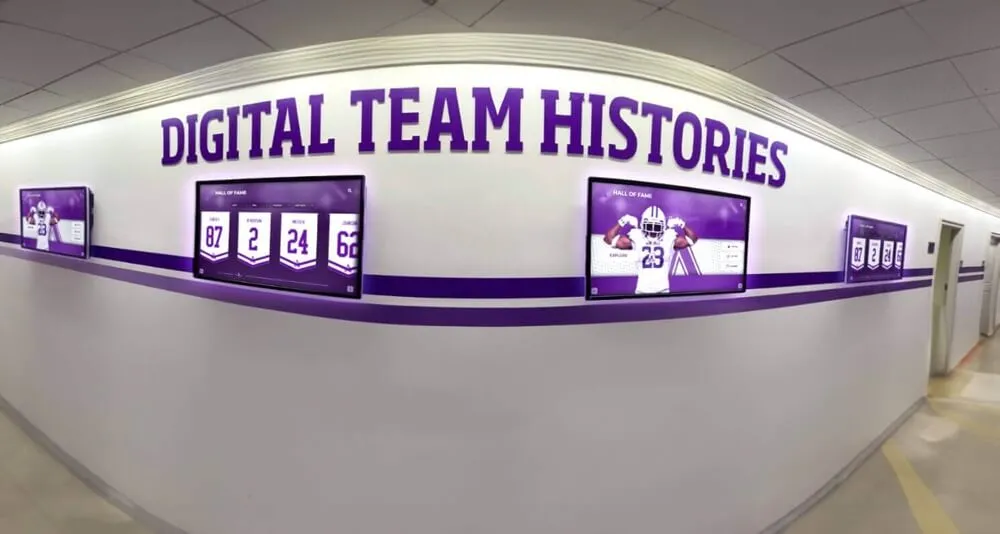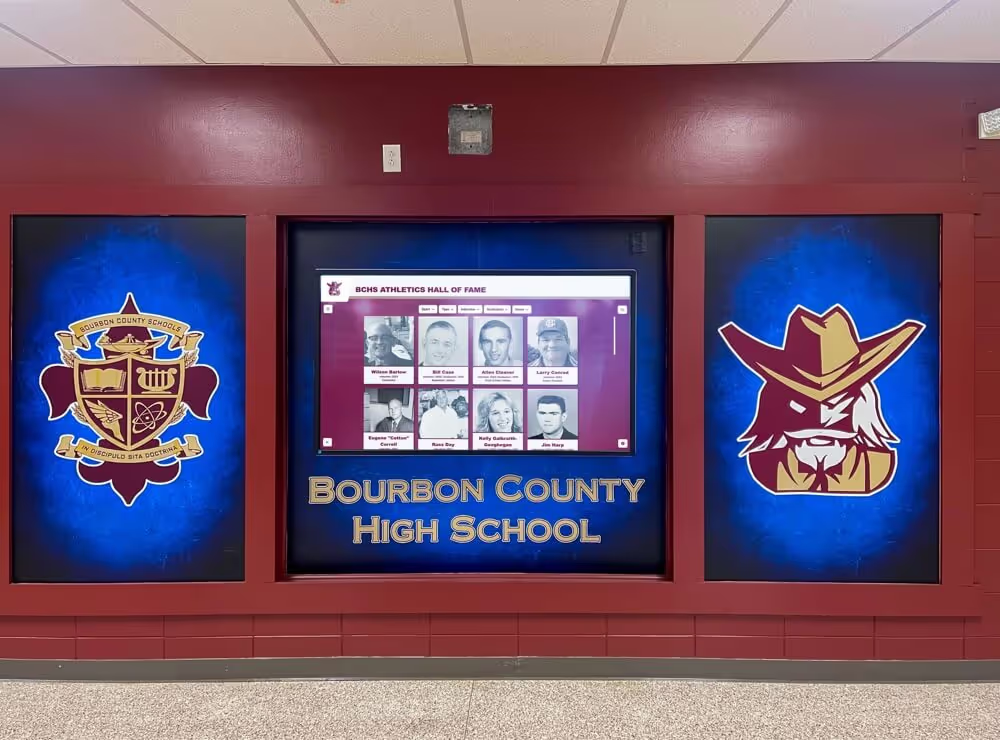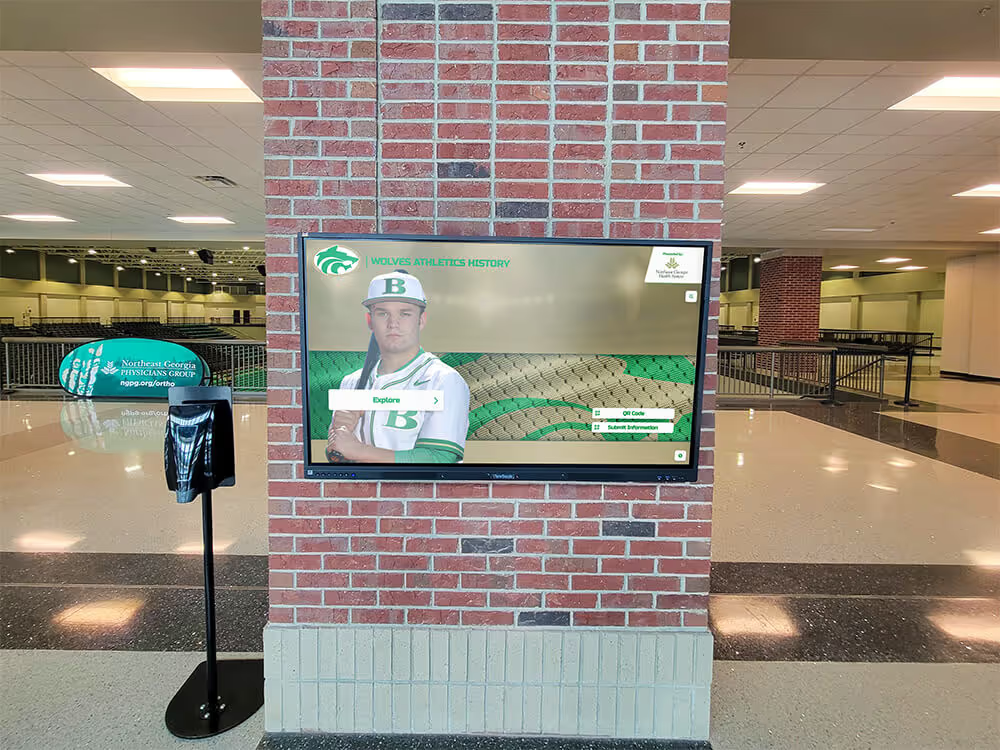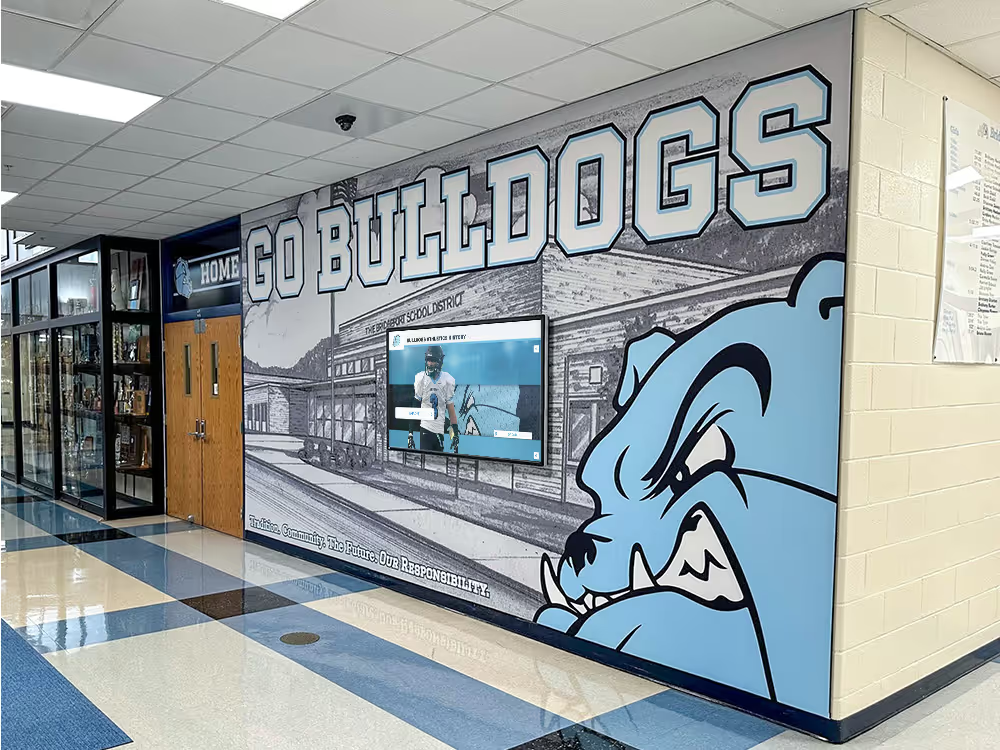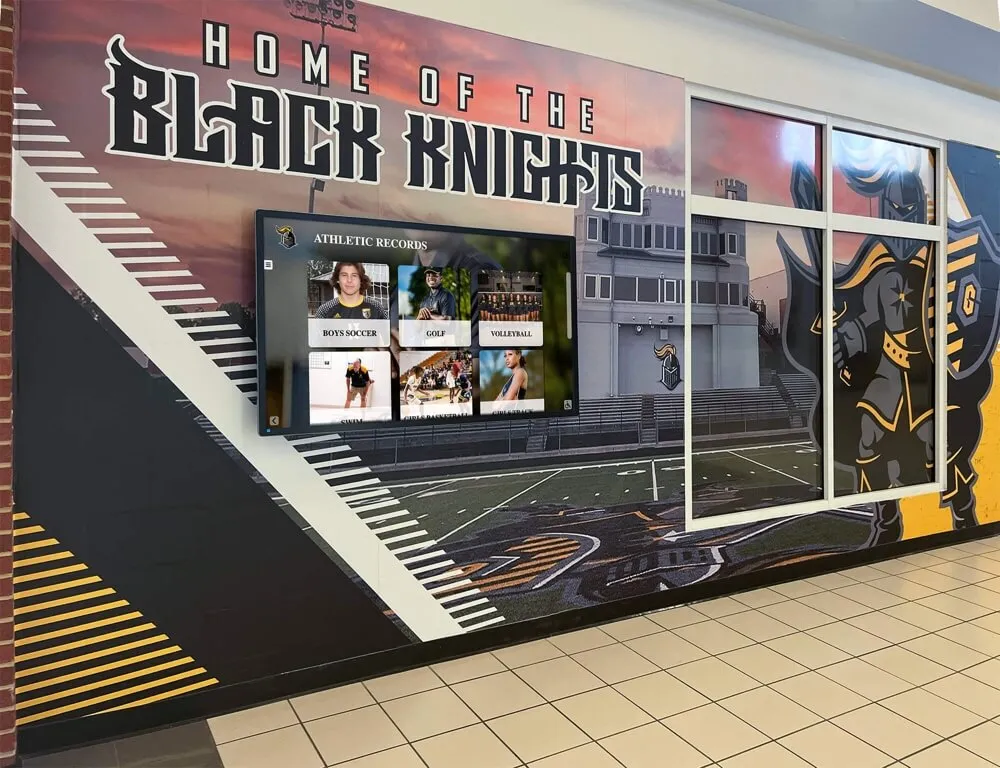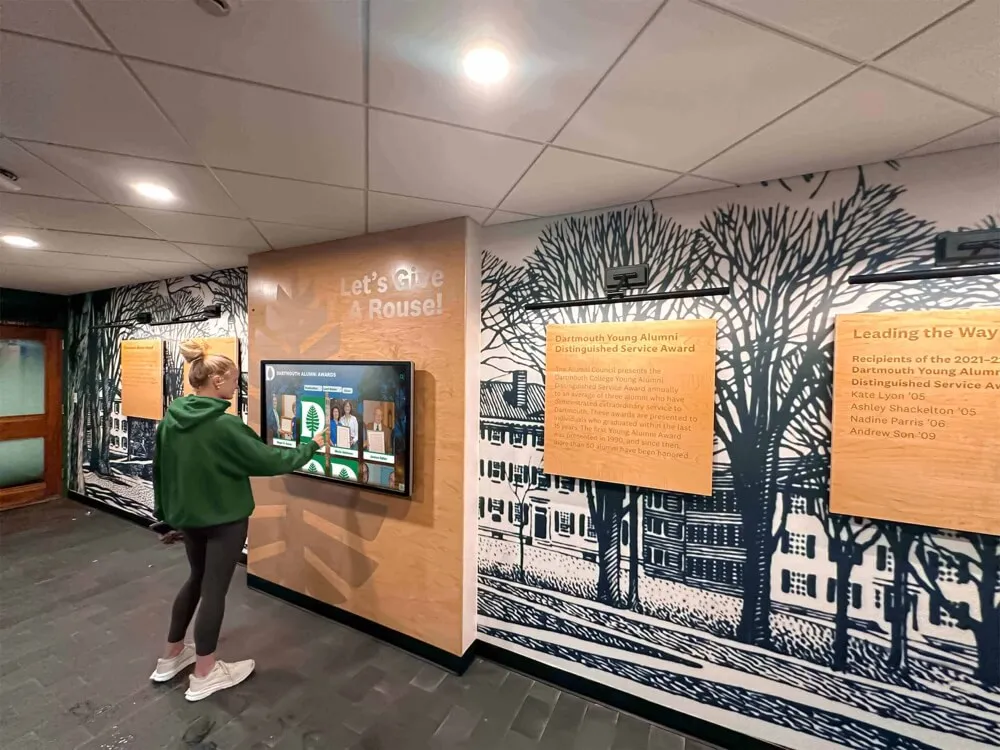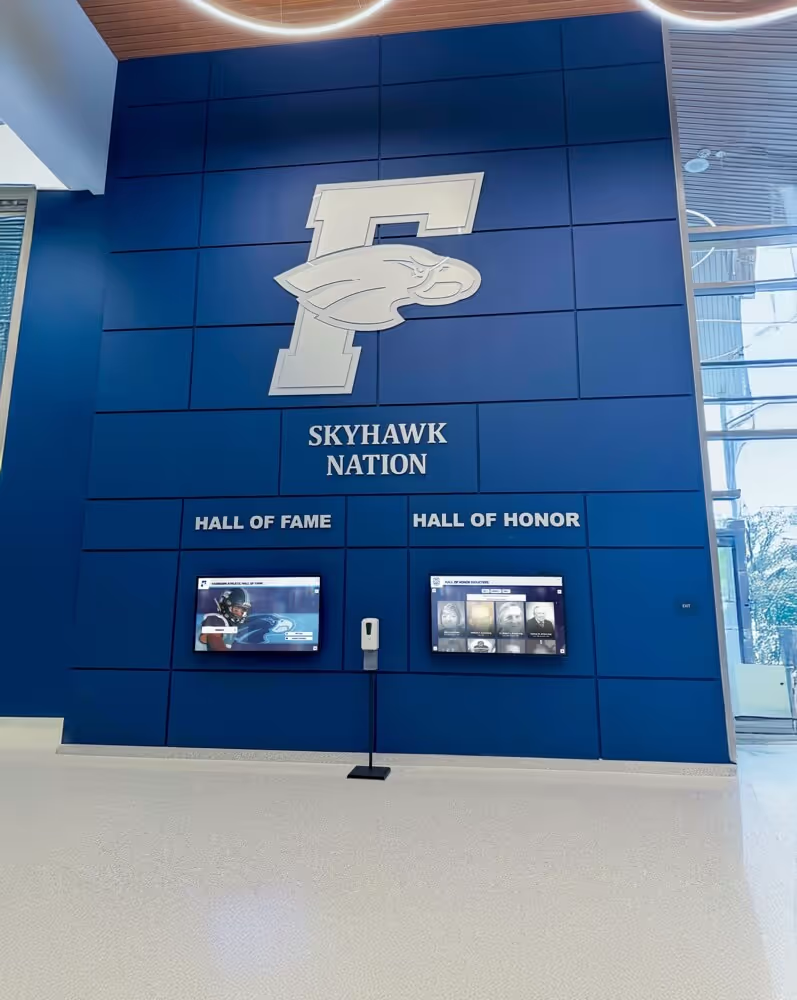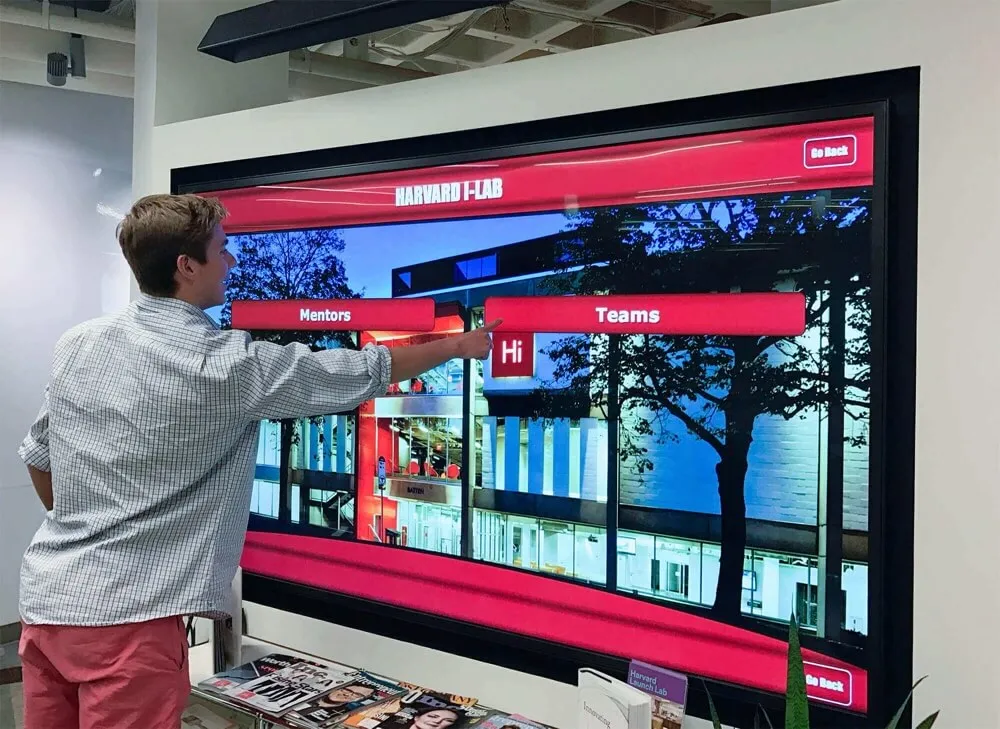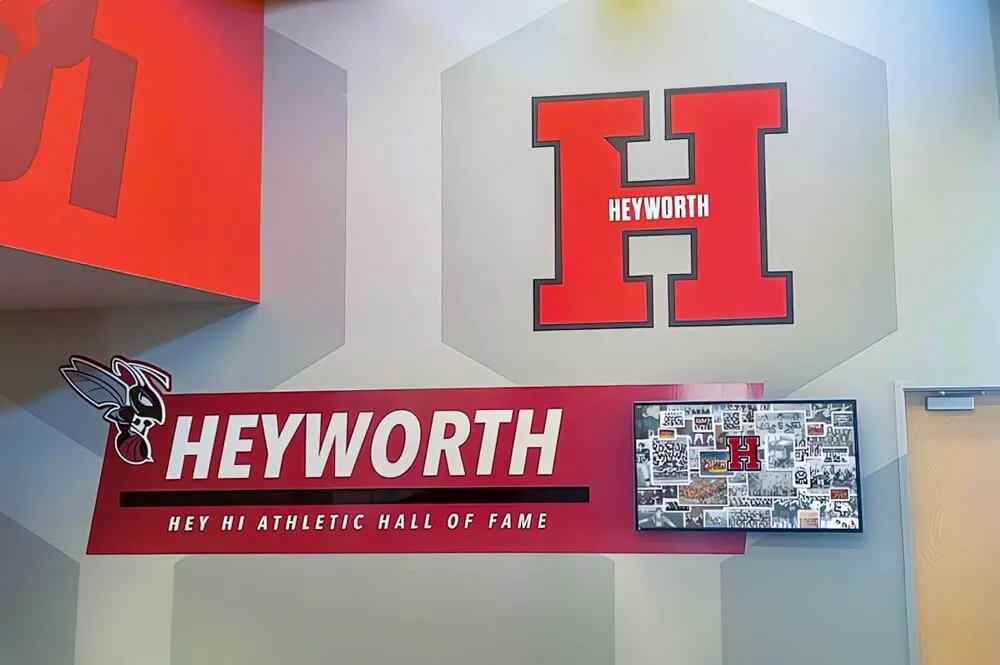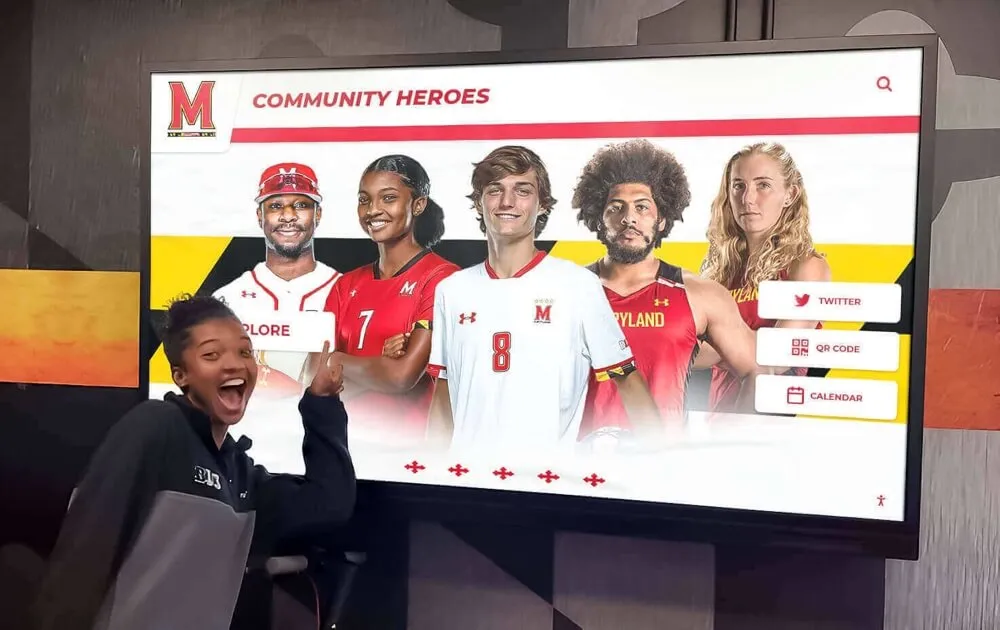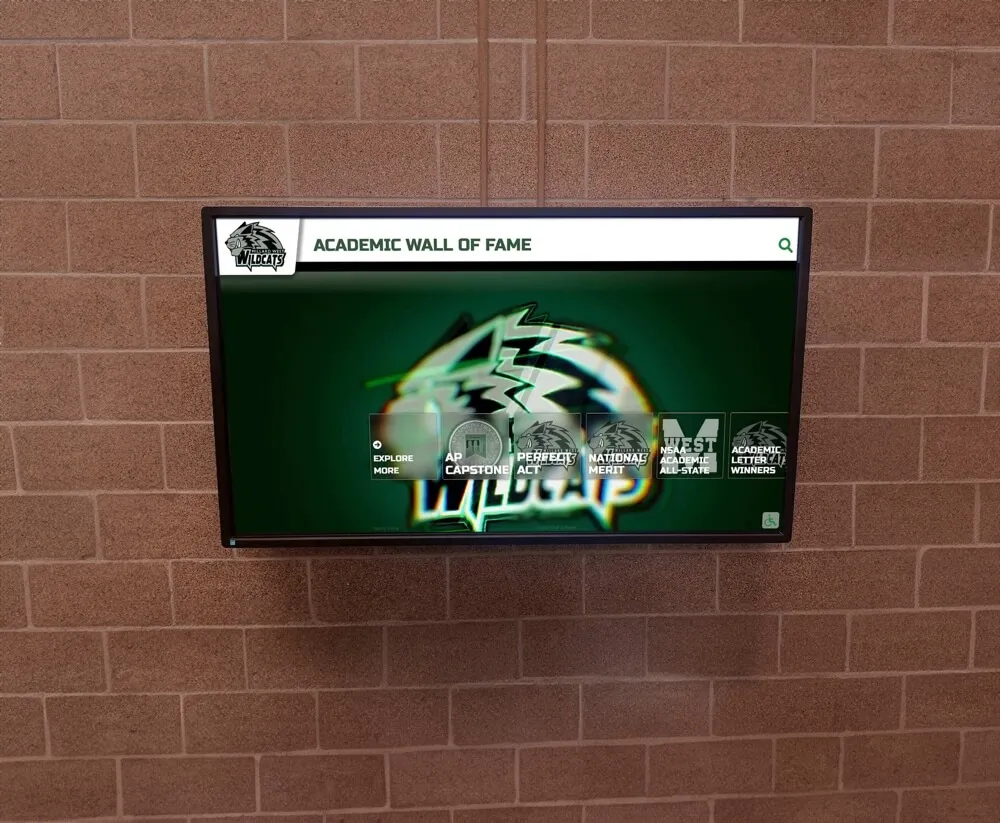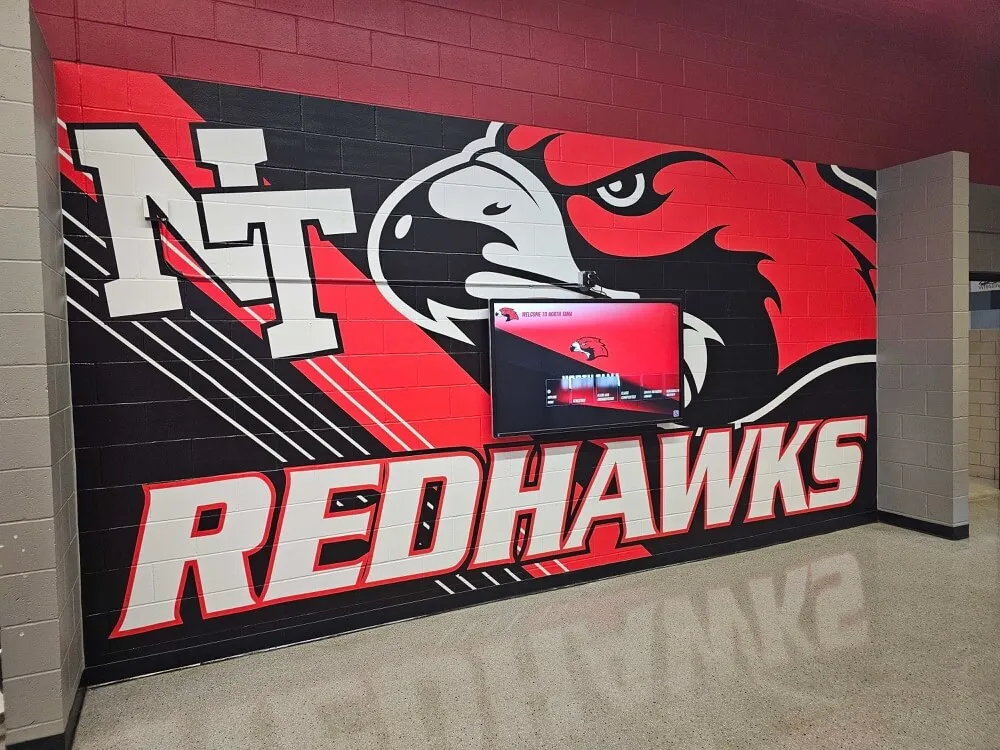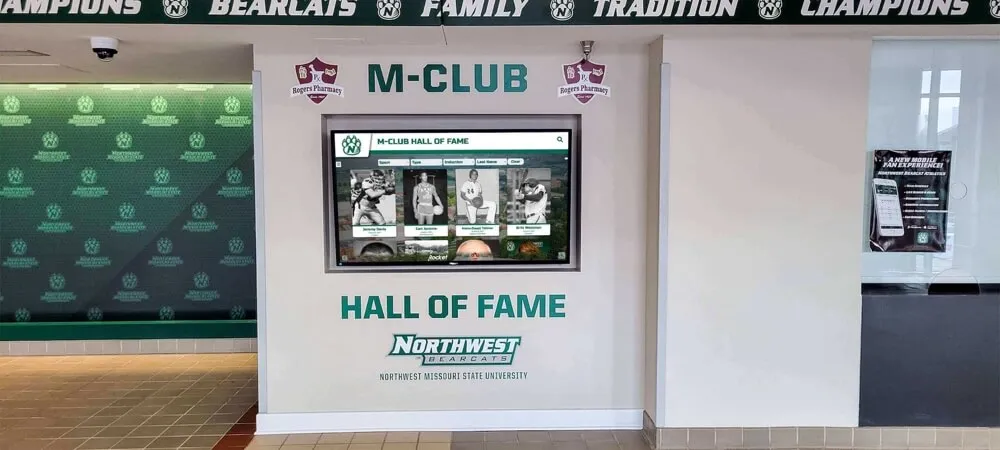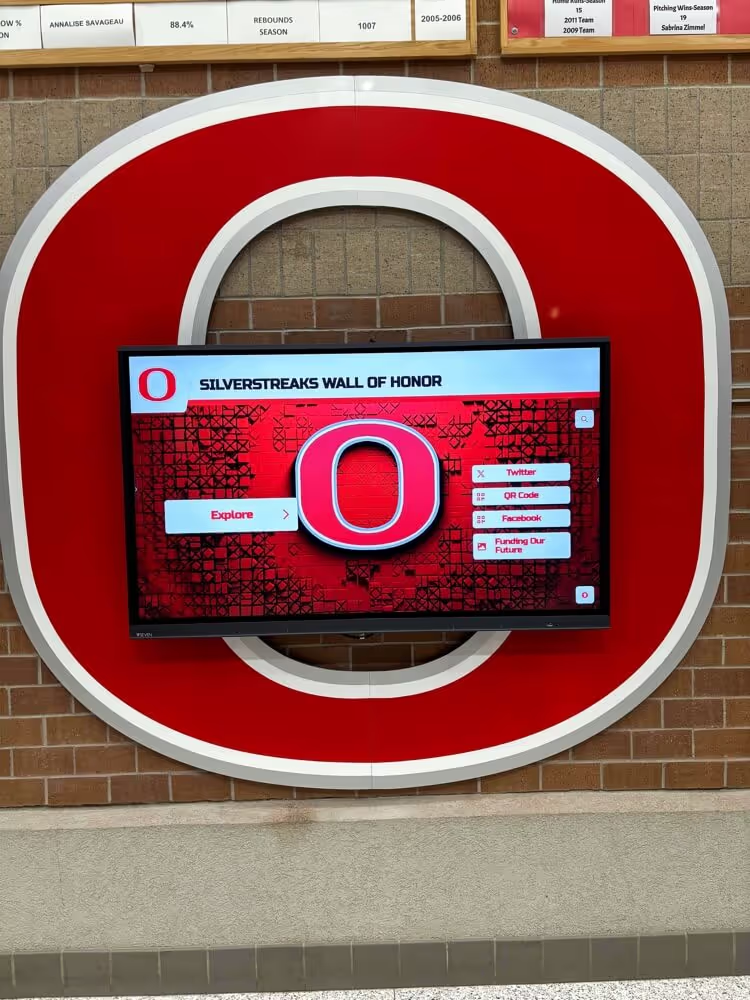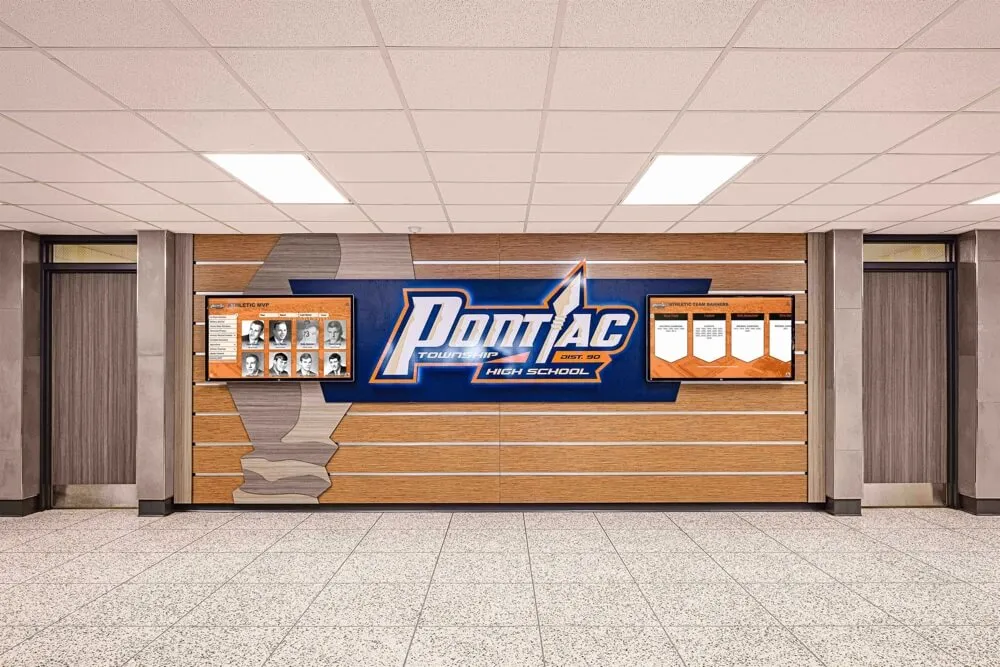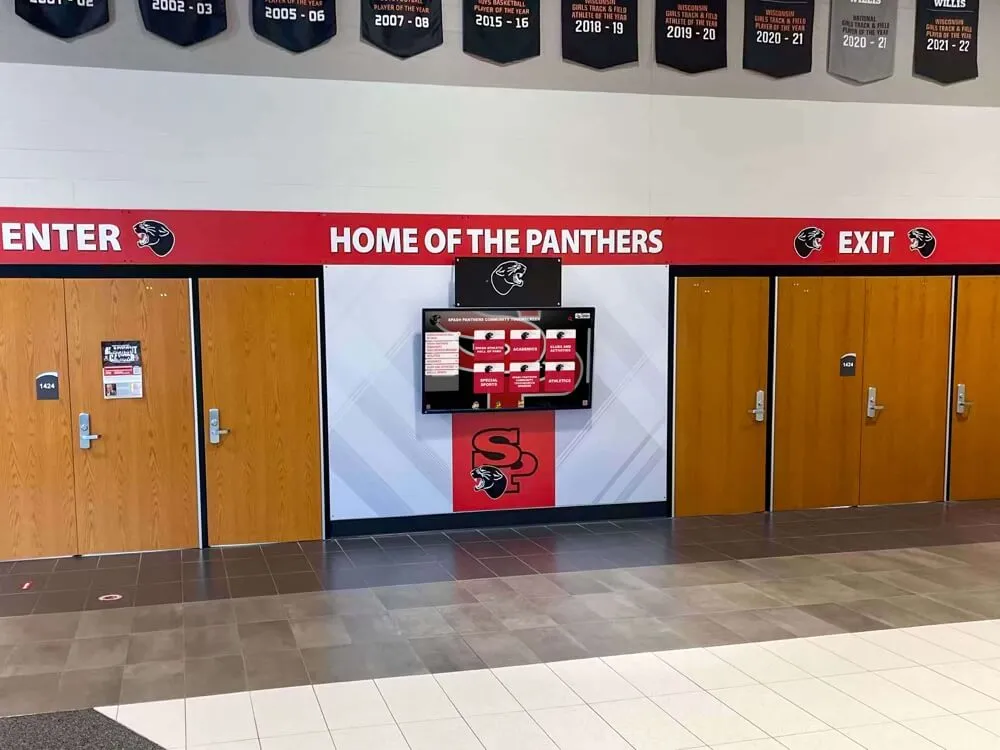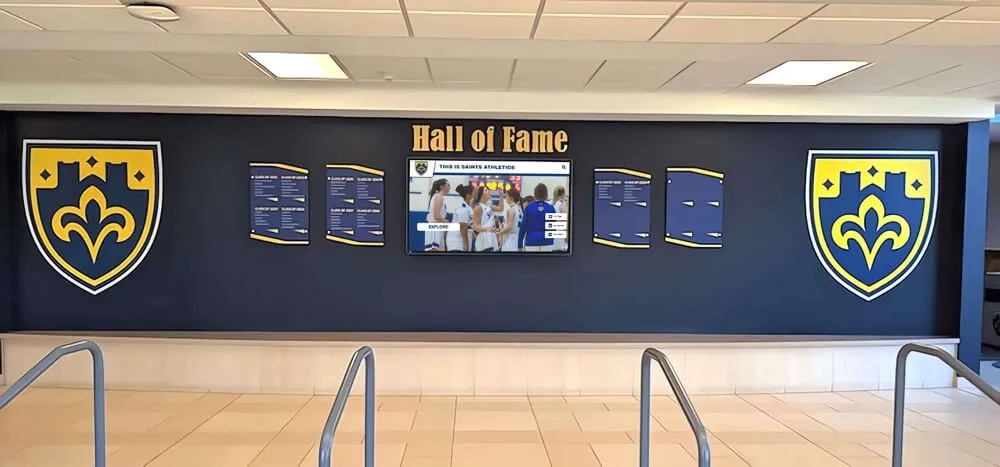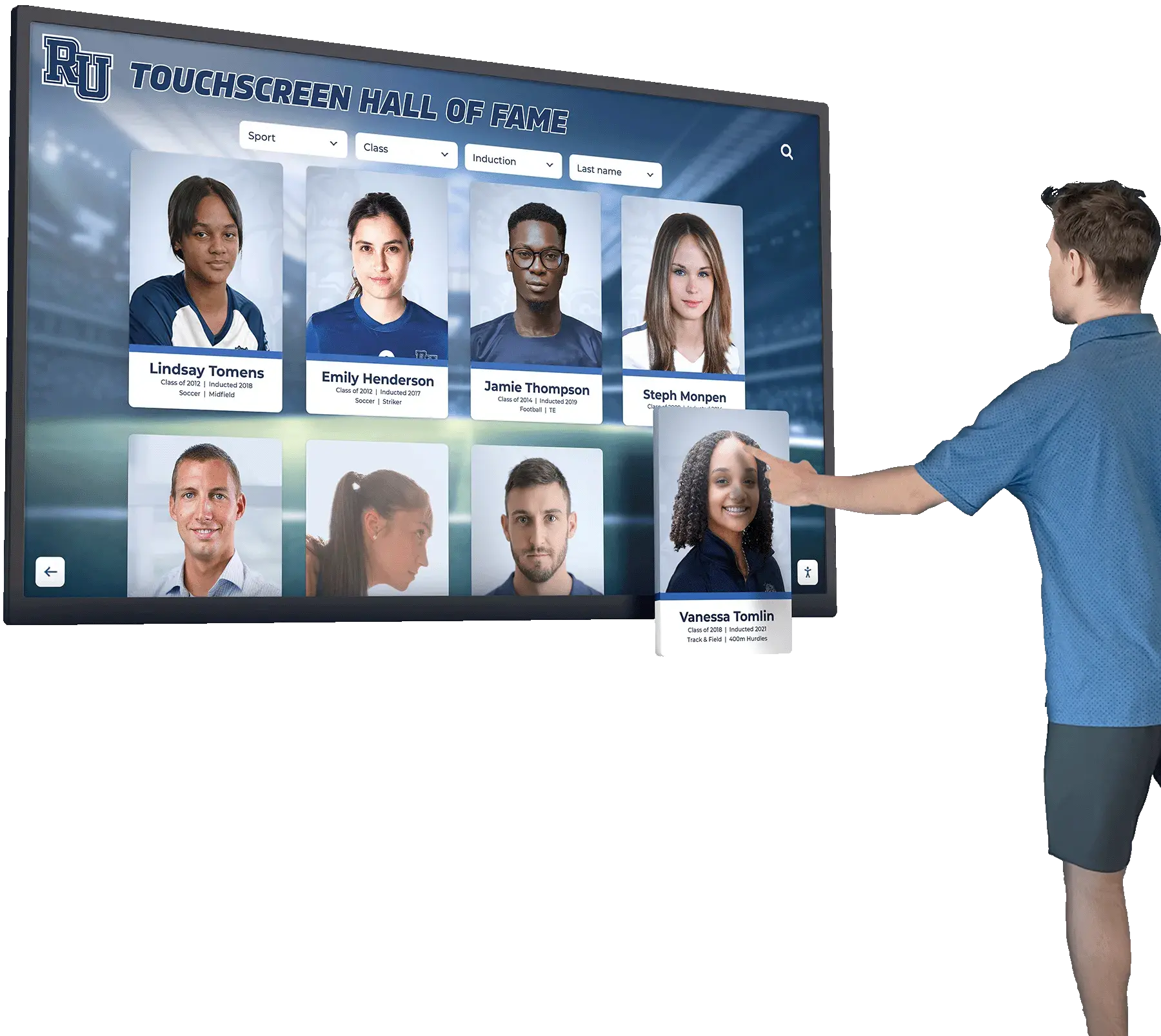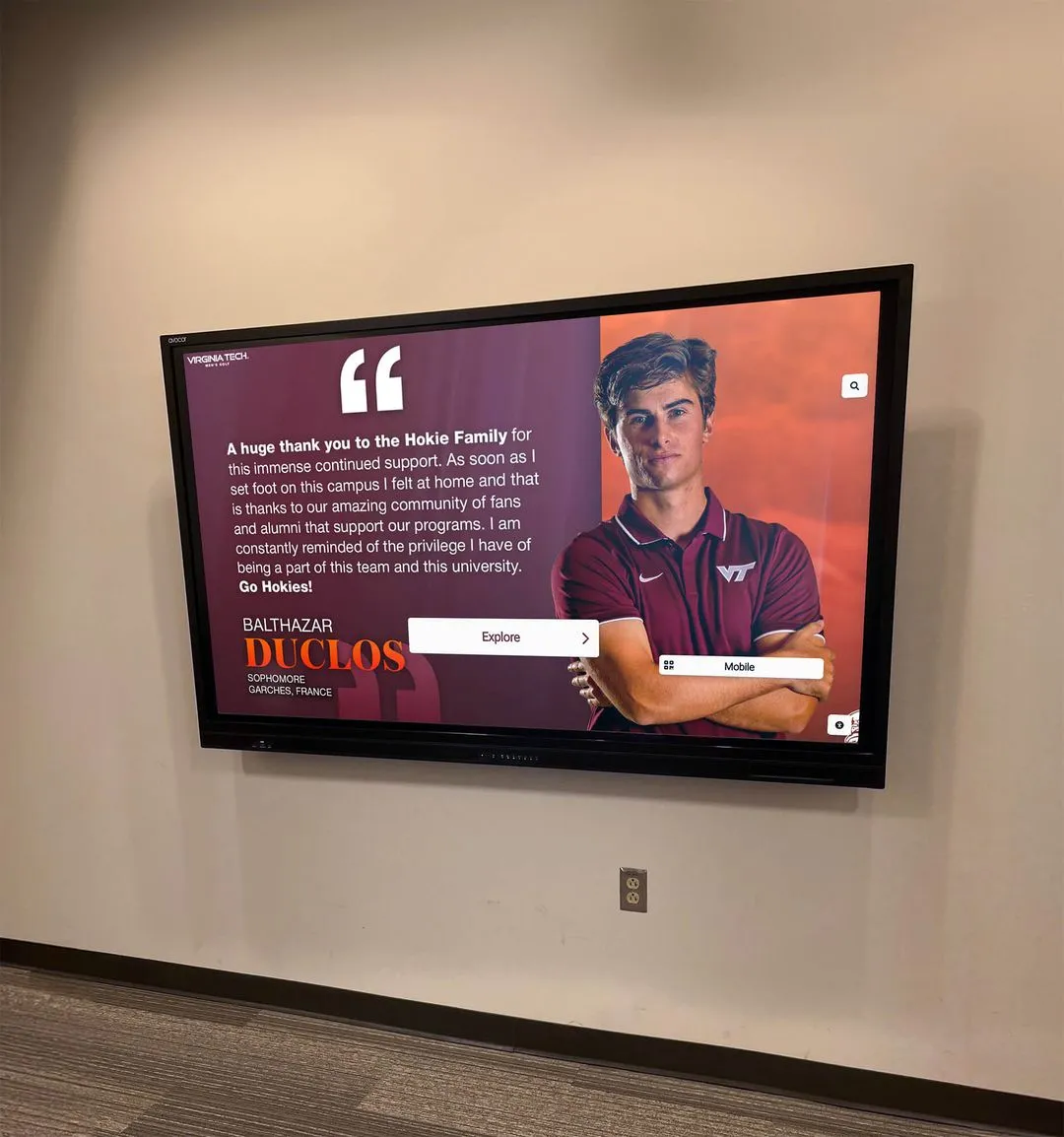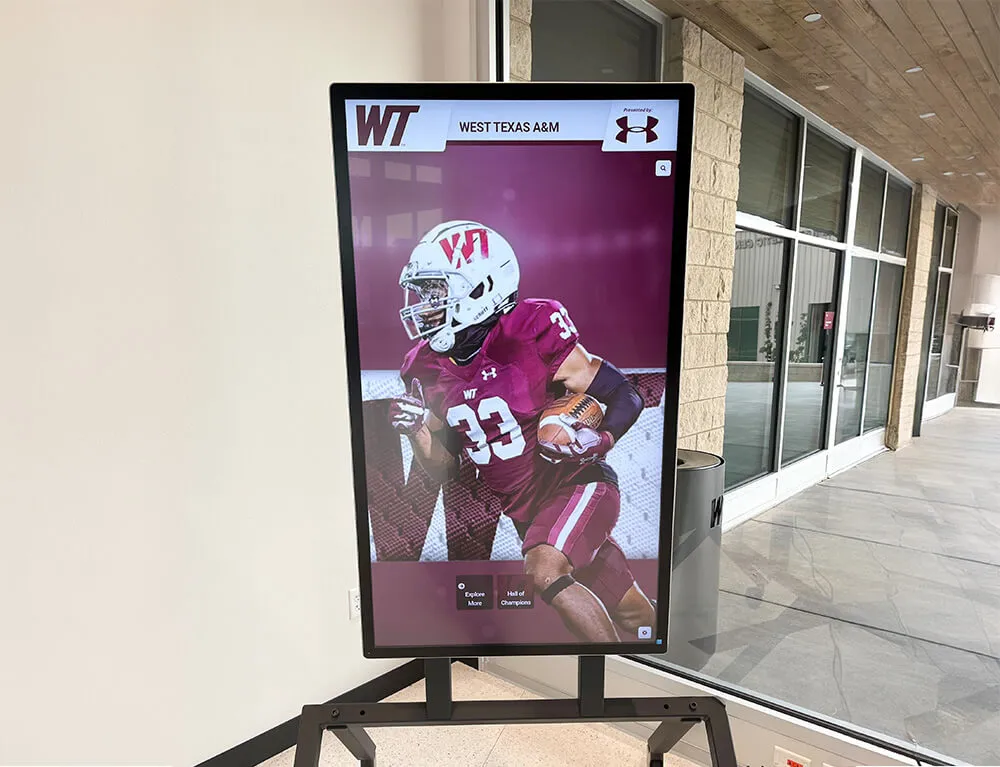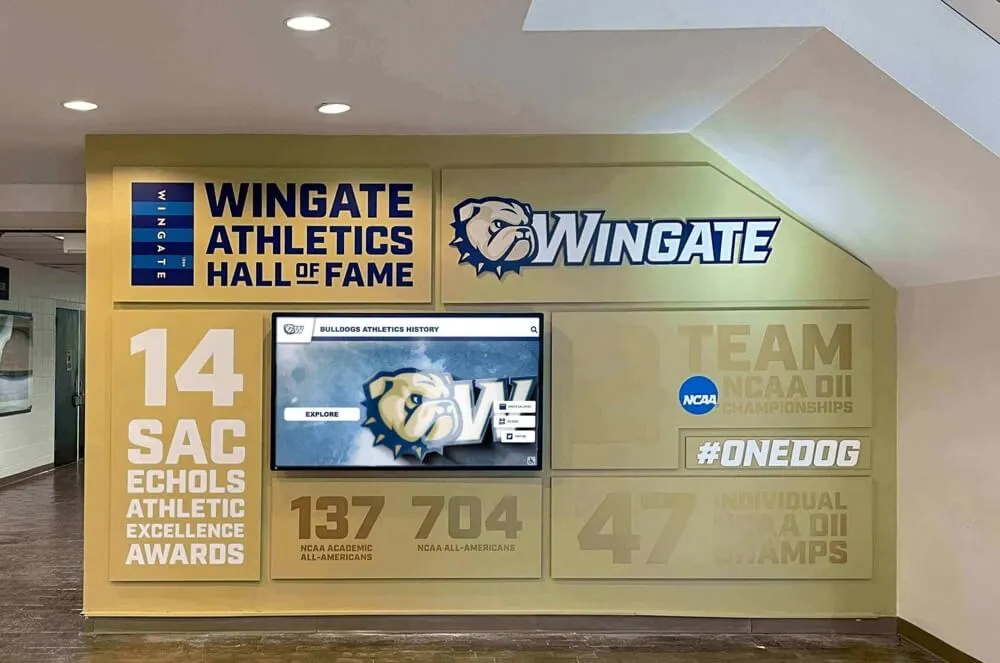Recognition should be accessible to everyone in your school community. Digital Walls of Fame present a unique opportunity not just to modernize recognition programs, but to make them truly inclusive in ways that traditional displays cannot achieve. At Rocket Alumni Solutions, accessibility isn’t an afterthought—it’s a fundamental design principle in all our recognition systems.
Beyond ADA Compliance: Truly Inclusive Recognition
While ADA compliance provides a baseline for accessibility, truly inclusive digital recognition systems go further to ensure everyone can engage with your institution’s achievements and history:
Physical Accessibility Considerations
Modern digital Walls of Fame address physical accessibility through:
- Adjustable Viewing Heights: Interactive displays that can be navigated from multiple heights
- Reach Range Optimization: Touch targets positioned within the recommended 15-48" range
- Approach Space Design: Sufficient clearance for wheelchair users (30" × 48" clear floor space)
- Alternative Input Methods: Options for users who cannot use touch interfaces
These physical considerations should be addressed during the implementation planning phase of your project.
Visual Accessibility Features
For visitors with visual impairments, digital displays offer advantages over traditional recognition methods:
- High Contrast Modes: One-touch switching to high-contrast viewing options
- Text Magnification: Dynamic text resizing without loss of formatting
- Screen Reader Compatibility: Structured content with proper heading hierarchy and alt text
- Audio Narration: Optional audio descriptions of visual content
- Customizable Font Options: User selection of fonts optimized for reading disabilities
These features enhance the powerful storytelling capabilities of digital recognition by making narratives accessible to all visitors.
Case Study: Lincoln Memorial High School
Lincoln Memorial High School implemented an accessible digital Wall of Fame with remarkable results:
“Our previous trophy cases and plaques were completely inaccessible to some of our students and visitors. Since implementing our digital system with comprehensive accessibility features, we’ve seen participation from all segments of our community increase by over 200%. Parents with disabilities have specifically mentioned how meaningful it is to independently explore their children’s achievements.”
Their implementation includes:
- Voice-controlled navigation options
- Screen reader optimization
- Multilingual content support
- Height-adjustable display mounting
This accessibility-focused approach created significant measurable returns through increased community engagement.
Multilingual Support Expands Recognition Reach
Digital Walls of Fame break language barriers that traditional displays cannot:
- Real-time Content Translation: On-demand translation to multiple languages
- Cultural Context Preservation: Maintaining cultural nuances across translations
- Non-Latin Character Support: Proper display of names and achievements in native languages
- Bilingual Content Presentation: Side-by-side text for bilingual communities
These features support inclusive recognition programs that honor achievements across diverse cultural backgrounds.
Cognitive Accessibility Innovations
For neurodivergent users and those with cognitive disabilities, digital systems offer:
- Clear Navigation Patterns: Consistent, predictable interface layouts
- Progressive Disclosure: Information presented in manageable chunks
- Reading Level Options: Content adjustable to different comprehension levels
- Reduced Motion Settings: Options to minimize animations and transitions
- Guided Browsing Modes: Step-by-step assistance for exploring content
These cognitive accessibility features can be implemented through thoughtful content strategies that consider different learning and information processing styles.
Implementation Framework for Accessible Recognition
Creating an accessible digital Wall of Fame involves these key phases:
- Accessibility Audit: Assess current recognition displays for accessibility gaps
- Community Input: Gather feedback from people with diverse abilities
- Feature Prioritization: Identify must-have vs. nice-to-have accessibility features
- Installation Planning: Ensure physical placement meets accessibility guidelines
- User Testing: Validate design with diverse user groups
- Staff Training: Educate staff on maintaining accessibility as content evolves
For detailed technical guidance, consult our technical considerations guide which includes accessibility-specific hardware and software requirements.
Technologies Enabling Accessible Recognition
Several key technologies make accessible digital recognition possible:
- Proximity Sensors: Detect user approach and adjust interface accordingly
- Voice Recognition: Enable hands-free navigation
- RFID/Bluetooth Integration: Allow personal device connection for customized accessibility
- Text-to-Speech Engines: Convert visual content to audio on demand
- Machine Learning: Automatically generate alt text and content descriptions
These technologies align with the future trends in digital recognition that will continue to enhance accessibility in coming years.
Accessibility as Community Value Statement
An accessible Wall of Fame communicates institutional values:
- Visible Commitment: Demonstrates dedication to inclusion beyond compliance
- Alumni Engagement: Ensures all alumni can connect with their legacy
- Community Building: Creates shared experiences across ability differences
- Future-Ready Recognition: Adapts to emerging accessibility needs and standards
This commitment to accessibility strengthens alumni engagement by removing barriers to participation.
Measuring Accessibility Success
Institutions can track the impact of accessible recognition through:
- User satisfaction surveys across ability groups
- Engagement metrics segmented by interaction method
- Feedback from disability advocacy organizations
- Usage patterns of various accessibility features
- Community sentiment analysis
These metrics can be integrated into broader analytics strategies to measure overall recognition program success.
How To Create an Accessible Digital Wall of Fame
Implementing an accessible digital Wall of Fame requires thoughtful planning and execution. Follow these steps to ensure your recognition system serves everyone in your community:
1. Conduct an Accessibility Audit
- Evaluate current systems: Document accessibility limitations in existing recognition displays
- Identify compliance gaps: Note areas where displays fail to meet ADA requirements
- Assess digital infrastructure: Determine if existing networks and systems can support accessible features
- Document community needs: Catalog specific accessibility requirements for your unique population
2. Gather Stakeholder Input
- Form inclusive committee: Include representatives with varied abilities in planning
- Conduct accessibility interviews: Speak directly with community members who have disabilities
- Partner with advocacy groups: Connect with local disability organizations for guidance
- Survey broader community: Gather input on prioritizing accessibility features
3. Select Accessibility Features
- Prioritize must-have features: Identify non-negotiable accessibility requirements
- Balance complexity and usability: Choose solutions that are powerful yet intuitive
- Consider budget constraints: Find cost-effective ways to implement key features
- Plan for future expansion: Design systems that can accommodate evolving accessibility standards
4. Design Physical Installation
- Map traffic patterns: Ensure accessible routes to the display
- Plan for multiple interaction heights: Accommodate standing adults, children, and wheelchair users
- Consider environmental factors: Address lighting, glare, and acoustic considerations
- Include alternative input options: Provide methods beyond touch (voice, keyboard, etc.)
5. Test With Diverse Users
- Recruit varied testers: Include people with different disabilities in testing
- Observe real interactions: Watch actual usage rather than just asking for feedback
- Iterate based on findings: Make improvements based on testing results
- Document accommodation strategies: Note how different users adapt to the system
6. Train Staff on Accessibility
- Develop maintenance protocols: Establish procedures for keeping accessibility features functioning
- Create content guidelines: Ensure new content adheres to accessibility standards
- Schedule regular audits: Plan periodic reviews of system accessibility
- Designate accessibility champions: Assign responsibility for ongoing accessibility oversight
Conclusion
Digital Walls of Fame offer unprecedented opportunities to make institutional recognition truly accessible to everyone. By implementing thoughtful accessibility features, schools transform recognition from a visual-only experience into an inclusive celebration of achievement that can be experienced by all community members regardless of ability.
The accessible digital Wall of Fame doesn’t just showcase past achievements—it demonstrates an ongoing commitment to recognizing and valuing every member of your educational community. These systems also have a profound impact on current students by showing them that achievements are recognized and celebrated regardless of ability.
Ready to make your recognition program fully accessible? Contact Rocket Alumni Solutions to discuss how our inclusive design approach can create a digital Wall of Fame that works for everyone in your community.
